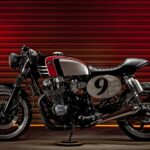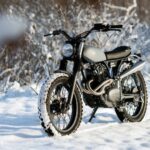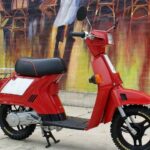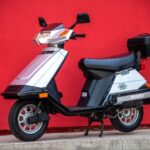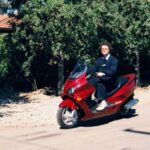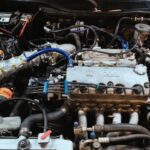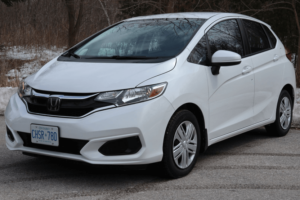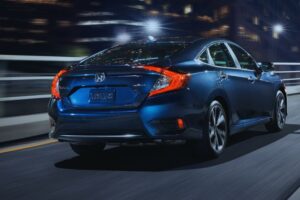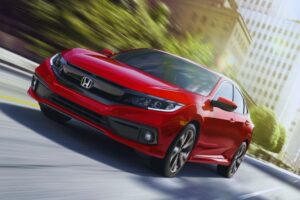The Honda Nighthawk motorcycle is a very light, maneuverable, inexpensive, and easy-to-maintain bike. It is also an excellent starter bike. In this Honda Nighthawk review, I’ll list all the specs and features to decide if it is the right motorcycle for you.
There are several models of the Honda Nighthawk, but the most popular might be the 750cc model. This Nighthawk is powered by a 4-stroke, transverse 4-cylinder DOHC, air-cooled engine capable of generating 75hp and 47.2 foot-pounds of torque at 7500rpm.
Read on to learn more about the Honda Nighthawk, including its specs, pros, and cons.
About the Honda Nighthawk
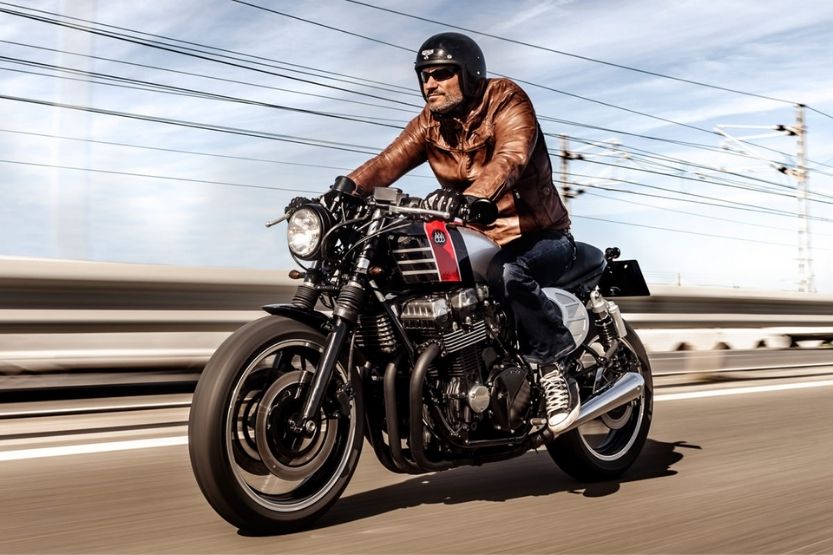
Unlike other production sports bikes, the Honda Nighthawk is a straightforward, no-frills motorcycle. It is an efficient, low-maintenance, and comfortable cruiser that is also a lot of fun to ride.
Honda introduced the CB750 into the Western market back in 1969, after experiencing record-setting sales of their smaller motorcycles, namely the Honda Cub and the Super Hawks. The profits Honda gained through the sales of their smaller motorcycles went into their racing development research. The lessons they learned also went into the creation of the CB750 Nighthawk.
Honda also slapped the Nighthawk badge on several other smaller bike models other than the CB750. These include the Honda Nighthawk 250, Honda Nighthawk 450, and the popular Honda Nighthawk 650. Of the lot, the Honda Nighthawk 750 sold the greatest number of units.
The CB750 specifically targeted the American market after Honda executives, including the founder Soichiro Honda, received feedback from their US dealers, indicating a rising interest in a bigger bike from the motorcycle manufacturer.
The CB750 was the first 4-cylinder motorcycle that came from a mainstream company. At the time, it was heralded as one of the most sophisticated production motorcycles. It is mainly because it has electronic ignition, kill switch, and turn signals.
Yes, these were pretty cutting-edge at the time. However, the power and efficiency of the CB750’s inline-4 overhead cam engine is the reason why the motoring industry coined the term “superbike.”
Honda introduced the Nighthawk badge in 1982, and they ran, except for a couple of years, until 2003. There isn’t that much difference between the previous CB750 model and the Nighthawk aside from the latter getting some additional badges and a different paint scheme.
Honda Nighthawk Engine
As mentioned earlier, the Nighthawk is a slight upgrade from the previous CB750, specifically the engine. However, it is not a radical upgrade. It is just made to be slightly bigger.
The Nighthawk is powered by a 749cc DOHC 4-cylinder, 4-stroke engine. The engine is capable of 66.57 horsepower and 41.54 ft-lbs of torque at 7500 RPM. Note that the later models are capable of 75 horsepower and 47 ft-lbs torque at 7500 RPM.
The thing that made the Nighthawk’s engine different from the other similar-sized motorcycles is the positioning of the cylinders. To minimize engine vibrations, Honda gave the CB750/Nighthawk an inline 4-cylinder engine.
This engine runs so smoothly that when Honda dealers demoed the Nighthawk, they would place a glass full of water on the seat then start the engine. It was discovered that not a single drop of water spilled out of the glass.
Honda Rebel 250 Specs and Review
Honda Nighthawk Pros
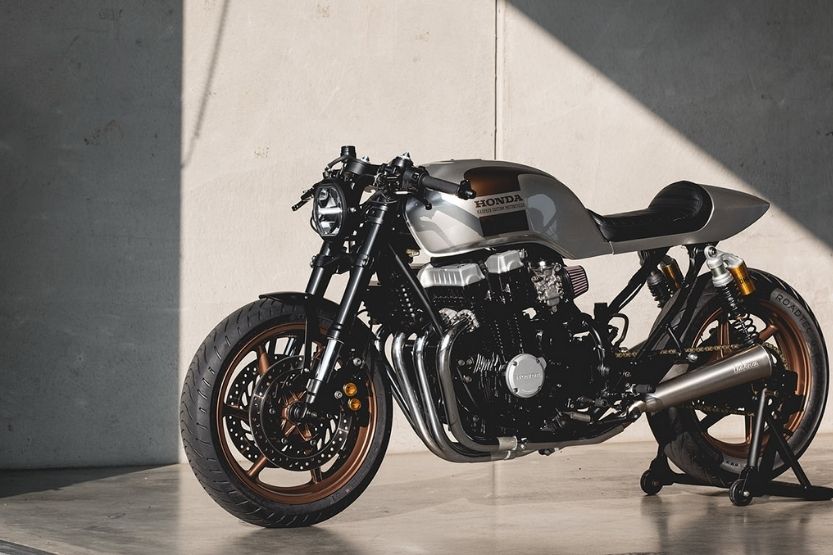
1. Great for Beginners
In my opinion, the Honda Nighthawk is a great bike for beginners at motorcycles. It has above-average handling and is comfortable to ride. It also has more than enough power to keep anyone satisfied for a long time. Even if you are an experienced rider, it is still a worthwhile investment if you are looking for a laidback ride.
2. Nighthawk’s Overall Size and Engine
The overall weight of the Honda Nighthawk is around 450-475 pounds, with a full tank of gas. This makes the Nighthawk a bit heavier than your average street bike, but it is much lighter than most touring motorcycles. It also gives the Nighthawk the maneuverability of a sports bike. It lets you weave through inner-city traffic almost effortlessly.
Apart from that, it is big and heavy enough to cruise down the highway without trucks and other larger vehicles blowing you to the side of the highway. Another nice thing about the Honda Nighthawk is its input response. If you are a beginner at riding a big bike, you will get used to the controls quite easily.
If you twist the throttle too much, the Nighthawk will smooth out your input so that it will not pop a wheelie underneath you. The same goes when you squeeze on the brakes too hard.
3. Riding Position
The Nighthawk has a neutral rider’s triangle, making it a comfortable motorcycle to ride even long distances. The pedals are directly underneath the rider, putting the lower body into a somewhat sporty position. The upper body is mostly upright. It keeps most of the rider’s weight off the wrists. It lessens fatigue, making longer ride times a lot more bearable.
The neutral rider’s triangle also makes the Nighthawk easier to control through heavy inner-city traffic. You will have no trouble lane-splitting and weaving through stalled traffic. If you are looking for something a bit sportier than a cruiser but more comfortable than a sports bike, then go for the Nighthawk.
4. Cost
Costs might differ depending on your area. However, you will also discover that Nighthawks are not that expensive. You may find a late 90s model in good running condition for a little over $2000. You can even find bikes from the 80s that you can cop for under $1000.
Don’t be afraid if you need to replace parts. Just like other Japanese mass-produced bikes, parts are easy to come by while being available at reasonable prices. Compatible cables, oil filters, lights, and other consumables are easy to find, too. If you are not that particular about keeping your Nighthawk all-original, you can find affordable reproduction parts for sale online.
Now, in terms of finding body panels and certain rare mechanical parts, like gear sensors or shift linkages, the process may be challenging. However, you can still find reproduction, or at the very least, compatible parts on eBay, Craigslist, or in the Facebook Marketplace. However, this kind of issue usually only affects the early 80s models. Parts for 90s Nighthawks are quite easy to source.
When it comes to insurance, it will depend on where you live and on your driving record. All things considered, you can most likely get a Honda Nighthawk insured for $100 a year; give or take a few bucks.
5. Low Maintenance
Honda motorcycles have a reputation for being among the most reliable machines on the road. Proof of it is the enduring Honda Cub. Aside from the regular tasks like changing the consumables, you will not find any serious hardware issues with the Honda Nighthawk. The machines were built to handle abuse.
Honda Nighthawk Cons
Rare Parts
If you are adamant about keeping your Honda Nighthawk all-stock, specifically the early models, then you may have a slight problem. You will discover that the uncommon parts of 80s Nighthawks are hard to find. However, there is a huge chance that you can find the parts you need on eBay.
Note that they may be marked up considerably, though, considering the said parts are rare. In any case, if you cannot find the parts that you need, then you can make do with universal parts. You can then use your creativity to make them work.
Repairs
If you are not that mechanically inclined or do not have a buddy who knows his way around old motorcycles, then look for a Honda Nighthawk that is in good riding condition right off the bat. It is not a good idea to buy an old, hardly running Nighthawk or any vintage motorcycle for that matter.
The main reason is that most commercial motorcycle garages refuse to work on a bike that is more than a decade old, and most Nighthawks are pushing 30 years old. The best that they can do is mount new tires on the rims.
If you are looking for a project bike, get one with an engine that turns. However, if you are looking for a Nighthawk that you can ride right away, I suggest looking for one in relatively good condition. Getting a banged-up Nighthawk is not worth the hassle.
For project bikes, the Nighthawk is already a good choice. Spare parts are easy to find. There are minimal electronics aside from the basics, and repairing these kinds of bikes is easy.
What to Consider Before Buying a Honda Nighthawk
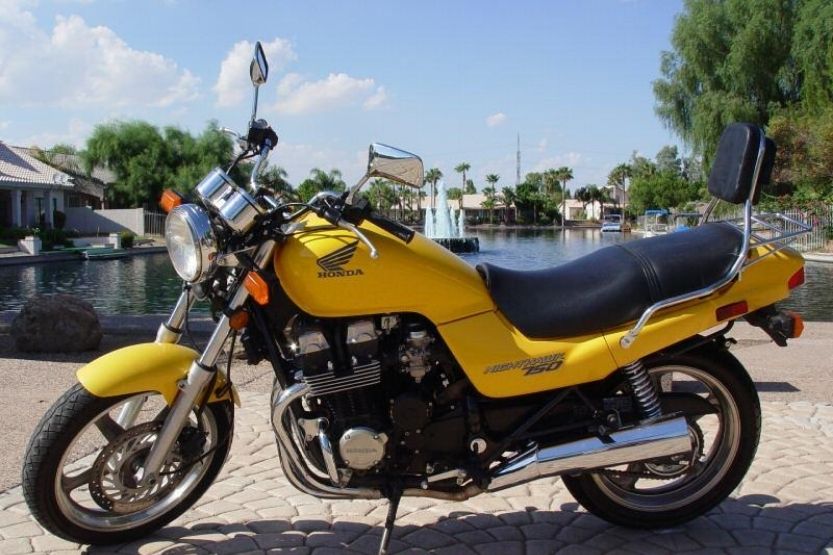
If you have decided to get a Nighthawk, here are some tips to spot potential problems. That way, you can gauge for yourself if the unit that you are looking at is worth the trouble:
1. Check for Leaking Oil and Other Fluids
The nice thing about the minimalist design of the Nighthawk is that there is no huge plastic bodywork that will prevent you from spotting leaks in the engine. Pump the front forks a couple of times to check if the shocks are leaking. The seller might have wiped the forks before your arrival.
2. Check the Valve Cover Gasket
One particular place that you need to pay extra attention to is the valve cover gasket. If you see any signs of it getting removed, then it might be a huge red flag. Ask the seller why the gasket was taken off and replaced. The Nighthawk has hydraulic valve adjusters that make it unnecessary for owners to open the engine, even for routine maintenance.
3. Examine the Exhaust System
Another area of concern is the exhaust system. The Nighthawk uses a four-into-two exhaust chrome exhaust system. However, the collector that runs underneath the motorcycle is prone to rust. Check the underside of the bike to figure out if there are any problems.
Remember that aftermarket replacement exhaust pipes are rare, so save yourself from buyer’s remorse later. Get on your knees and check the underside of the bike for any anomalies.
4. Aftermarket Accessories Add Significant Value
It also helps to do your homework about the Nighthawk to get a good deal. For instance, Honda provided accessories for the Nighthawk, like a luggage rack, a sissy bar, and a center stand. Not that many people back then opted for these options. If you see a bike that came with aftermarket accessories, know that they add a significant value.
5. Keep Your Ears Open for Unusual Sounds When Test Driving
When you go on a test ride, keep your ears open for unusual sounds from the valve train. If you hear any unusual clicking noises, there might be a problem with the hydraulic adjusters being clogged up with sludge. It usually happens if they do not regularly change the Nighthawk’s oil.
6. Bring a Fully Charged Battery
If the bike you are eyeing has been sitting in storage for a while, bring a fully charged battery. Use it to check if the electric start is still good.
7. A Few Minor Repairs Is Not Costly
The nice thing about Honda Nighthawks is that they are pretty low maintenance. If you find one that needs a couple of repairs and the price is right, you should get one. Having a few minor repairs should not be too costly. Also, with Honda’s reputation for making quality bikes, I am sure that you will be enjoying your Nighthawk for a long time before any major repair jobs.
It is not that hard to find a Honda Nighthawk. It is because it was mass-produced, and the company moved many units while it was still in production. However, finding one that is still all-stock and all-original will be hard. The reason is that previous owners would ride these bikes to the ground if they could.
Conclusion – Honda Nighthawk Specs and Review
Among the different variants of the Honda Nighthawk, the most popular by far is the 750cc model. The CB750 Honda Nighthawk is powered by an inline 4-cylinder, 4-stroke DOHC engine. This powerplant is capable of up to 75 horsepower and 47.2 foot pounds of torque at 7500rpm.
Owning a Honda Nighthawk is like owning a piece of motoring history. The original Honda CB750 was the reason the term “superbike” was coined. The Nighthawk cemented that claim. However, although it has plenty of power, the Honda Nighthawk is still a beginner-friendly motorcycle that will get you hooked.
Read next:

